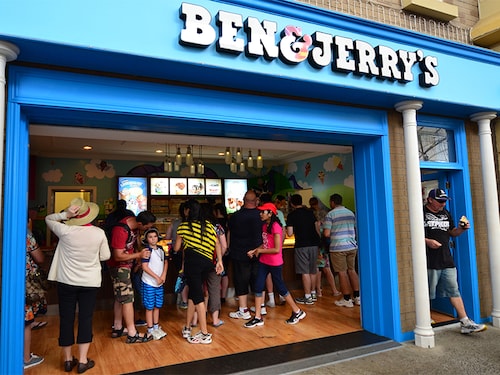Why every good brand also needs to have a strong 'purpose'
Purpose seems to be the new positioning - separating brands that do good from those that merely fulfill a need


 Image: Shutterstock.com
Image: Shutterstock.com
Do you remember that scene from Friends where someone tells Joey they don’t have a TV?
His incredulous response was “What does all your furniture point towards?”
I find that TV a good metaphor for something in the business world. Something that everything should point towards – brand purpose.
Most organizations claim to be working towards a purpose. Some actually do.
Can you guess the name of the organisation with these words on their website under the “values” section?
“Corporate America is littered with the debris of companies that crafted lofty values on paper but, when put to the test, failed to live by them. We believe in values lived, not phrases memorized. If we had to choose, we’d rather have a team member who lives by our values than one who just memorizes them.
We have five primary values that are based on our vision and provide the foundation for everything we do: People as a competitive advantage, Ethics, What’s right for customers, Diversity and inclusion and Leadership.”
This sounds like your average organisation with good intentions.
Only, the turn of events proved that Wells Fargo probably could not live up to these words.
They are certainly not the first to falter, nor the last.
There might be a reason why millennials are not as trusting of business as consumers before them. And yet, these consumers are an idealistic lot, preferring brands with purpose.
In fact, purpose seems to be the new positioning - separating brands that do good from those that merely fulfill a need.
What’s a good old marketer to do?
After all, purpose isn’t something you can just glue on.
Here is the 2016 list of the strongest purposeful brands according to Radley Yeldar
It would appear that it takes consistent effort for 4-6 years before consumers start connecting a brand with its stated purpose
Of course, marketers scrambling to bake in purpose into the mix have a shortcut in acquisitions. Seventh Generation and Ben and Jerry’s were picked up by behemoths keen to have brands with clear, authentic voices into their portfolio. To their credit, the parent companies have by and large allowed them to flourish undiluted.
How different is a purpose fueled organization compared to others?
Earlier this year, I had the opportunity to visit Method at their San Francisco office. In consumer groups with millennials, their name had cropped up often as a wonderful brand with focus on doing the right thing.
From the moment I set foot in their building, it was clear that this was a place where everyone knew the answer to “Why am I here?”. The words “people against dirty” were boldly written on the reception wall and referenced by almost everyone we met from the ladies at the reception to the designers who were dreaming up new eco-friendly concoctions. So, this ship had passengers who knew exactly where they were going.
But there was something else. There was a happy energy pulsing through people and they seemed to like each other and their workplace. The R&D, design and communication teams all knew what everyone was working on. They had a small set up to click pictures for their Instagram posts and an employee’s scarf was being photographed for a fabric softener. A strong common purpose seemed to engage everyone deeply.
Consumers seemed to love their uniquely designed transparent bottles that had sustainable cleansers in sustainable plastic. They looked more like perfume bottles than cleansers and it was easy to see why they were breaking category packaging codes. They wanted everything about the product to reflect their purpose. And they wanted consumers to immediately know at the store that here was a brand that was different.
This consumer preference was reflected in good growths - they were looking at expanding.
There are enough numbers to indicate that consumers reward brands with purpose. According to the Havas Media Meaningful Brands study 2015, here’s what they found after studying 1000 brands across 34 countries and 12 different industries:
1. Meaningful brands i.e brands with benefits that spanned functional, personal well- being and collective well-being, could expect 46% more share of wallet than those that were seen as less meaningful.
2. Must consumers would not shed a single tear if 74% of all brands disappeared
As I think back to that visit, I can’t help but wonder whether the luxury of being small and tight-knight was key for brands to be so purpose centric. After all, how much can a marketer in an existing large organisation change about a brand?
Often, revisiting brand history and purpose is a good starting point to develop a compelling brand purpose that answers the “why” behind a brand’s existence.
Once this is in place, marketers need to reflect it in the day to day reality of the brand and what it does. The “don’t be evil” thought is a good operating principle.
While Corporate Social Responsibility has been the traditional way for brands and organizations to give back to society, purpose guides what’s been taken from society and the environment for the brand to exist at all. Doing good becomes a way of doing business, not a guilt- assuaging activity.
Finally, walk the talk and out run competitors.
The last bit is where communication has a big role to play. Only Dove can own the real beauty space, only Lijjat Papad told us about the women who made our papad and only Amul can speak of national pride and self-sufficiency in dairy.
Their stories sit easy on the shoulders of organizations which are all pointed towards a common purpose, else they would fall flat.
My final word is on how it’s all right to make mistakes along the way as long as marketers keep walking. Finding one’s own purpose in life is hard enough to find and live up to. Doing it in an organization with thousands, if not more employees is quite a journey. The rewards it comes with, make it worth the while.
First Published: Nov 18, 2016, 05:01
Subscribe Now